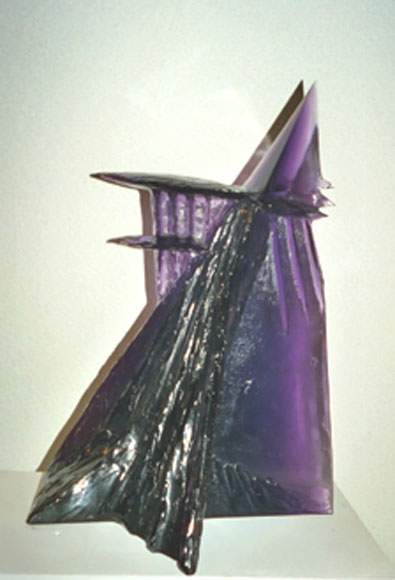This approach of glassworking fills the public with enthisiasm even beyonde the swiss and borders, some of the collection makers rushed from every corner of the world (planet). « In Bohemia, he glass art is expressed in all the fields, from desing in industrial series up to individual work related to architecture. From the tiny small sculpture to monumental facilities requiring » lot of space. These differents kinds are part of the art education provided in this country. His whole school background took eight or nine years.
« In Bohemia, he glass art is expressed in all the fields, from desing in industrial series up to individual work related to architecture. From the tiny small sculpture to monumental facilities requiring » lot of space. These differents kinds are part of the art education provided in this country. His whole school background took eight or nine years.
Since the fondation of the first specialised school in Kamenicky Senov (Steinshönau) in 1856, an effort was made to improve teaching methods in glassprocessing.
The school of Applied Arts in Prague, - changed into an Academy in 1946- played a leading role there. Teaching on an academic basis was arable there since 1920, initiation to handcraft.
Skills was provided through the stdy of cases in point related to painting and sculpture.
In this exhibition « the magic of glass » the choice was focused on sculpture that remain man sized ones. It first right, we can guess the features of glass art in Bohemia, the latter are also relarted to a handcraft fmishing touch close to perfection. In order to achieve the global vision of the universe of Czech glass art, we could include the contemporary engravings and so many other examples of private works.
The fifteen short listed artists belong to the first three after war generations they all origrante from – (except Jaroslav Svoboda et Jan Stohanzl)- the Academy of Applied arts in Prague. Its glass section was under the supervision of two personalites Professor Karel Stipl and Professor Josef Kaplicky up to 1963. Then, the supervision was handed to Stanislav Libensky and the two glass section got merged in 1965.
Six of the artists who attended that exhibition are from the first generation – Jaroslava Brychtova, Vaclav Cigler, Pavel Hlava, Stanislav Libensky, René Roubicek and Miluse Roubickova they’re among the artist pioneers who set the foundations of contemporary glass art. Two of them Vaclav Cigler and Stanislav Libensky ruled the glass sections of the superiors schools of Bratislava and Prague.
Bohumil Elias, Dana Vachtova and Stanislav Kotska are among the representatives of the second generation. The two former ones were trained by Kaplicky just like most of the artists mentioned.
Stanislav Kotska and the younger ones of the third generation were represented by lvana Houserova, Bretislav Novak, Jaromir Rybak and Pavel Trnka were traned Libensky.
If the disciples of Stipl and Kaplicky were to be compared to Libensky’s disciples, you remark a big heterogeneousness in the artistic, development of the first generation. « Libensky School » is easy to recognize.»
Eva schmitt, scientific assistant at Augustinermuseum. Freiburg-Breisgau.
{backbutton}


